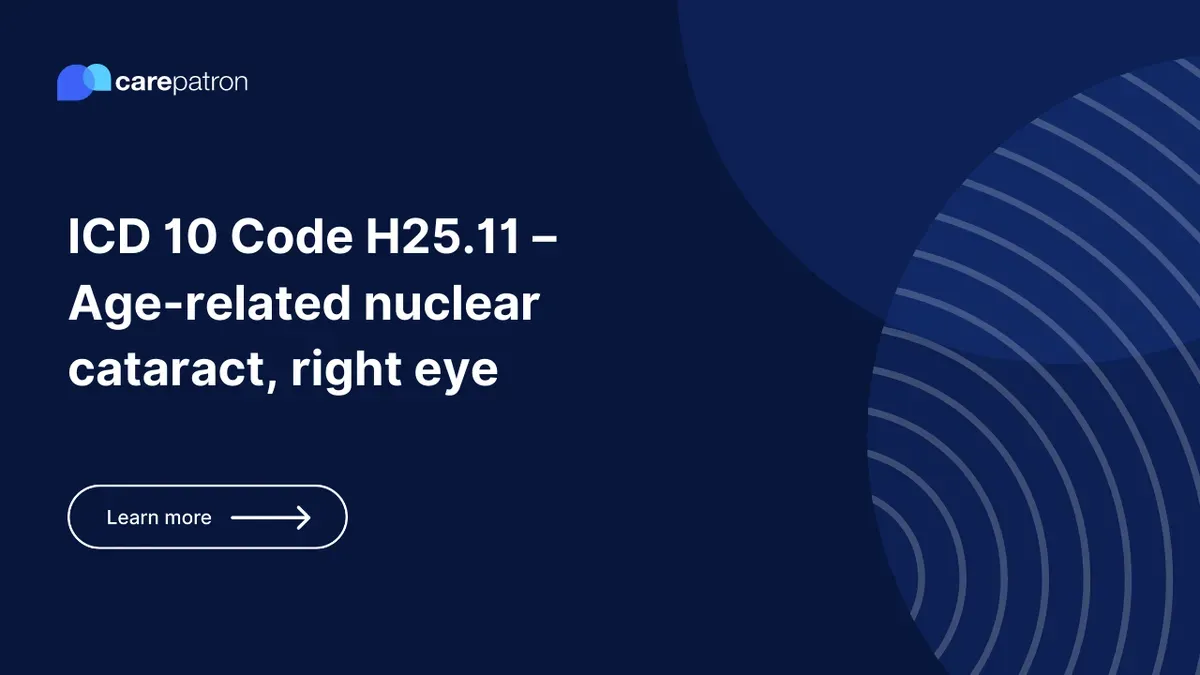
H25.11 – Age-related nuclear cataract, right eye
Dive into the clinical information, billability, synonyms, and more of ICD-10-CM H25.11, highlighting age-related nuclear cataract, right eye.
Use Code
EHR and practice management software
Get started for free
*No credit card required
Free
$0/usd
Unlimited clients
Telehealth
1GB of storage
Client portal text
Automated billing and online payments
